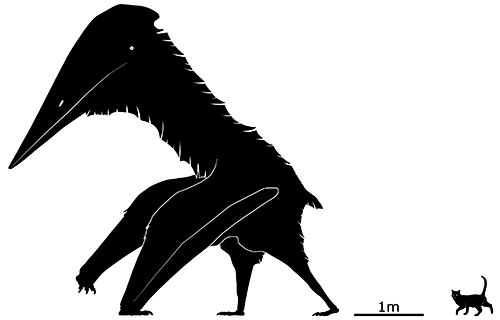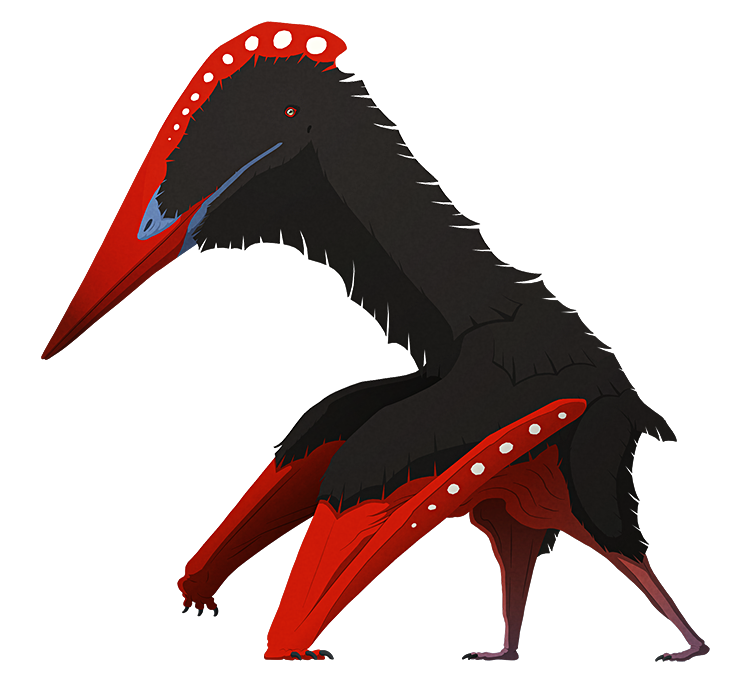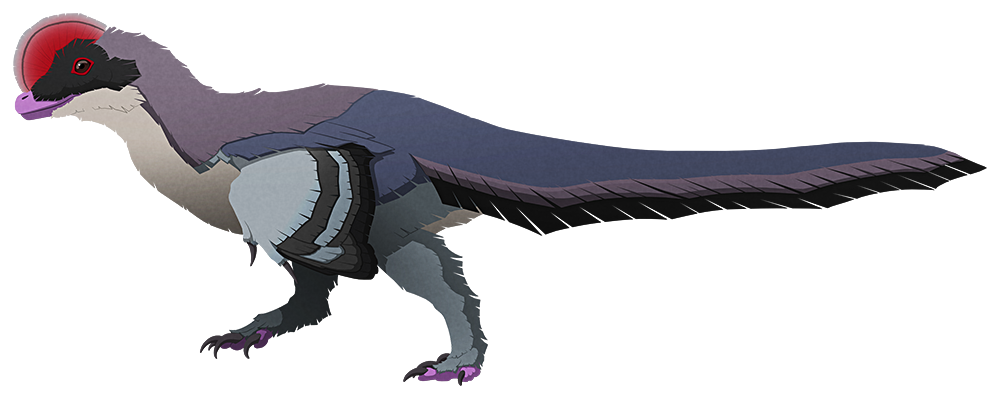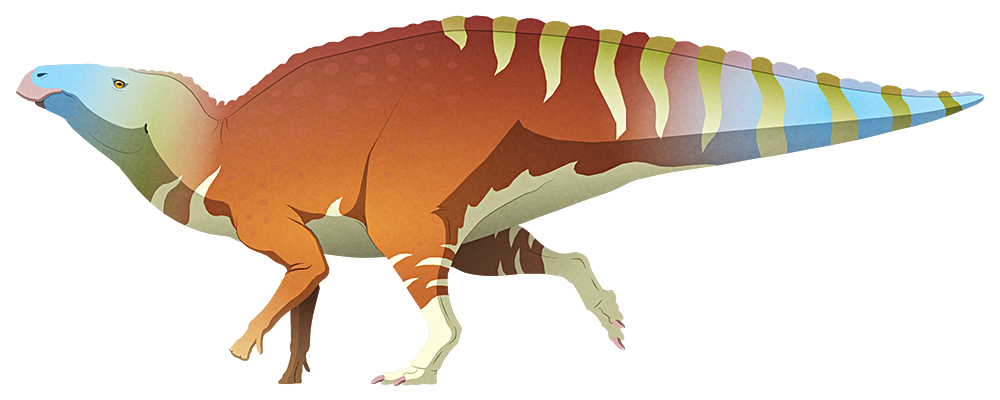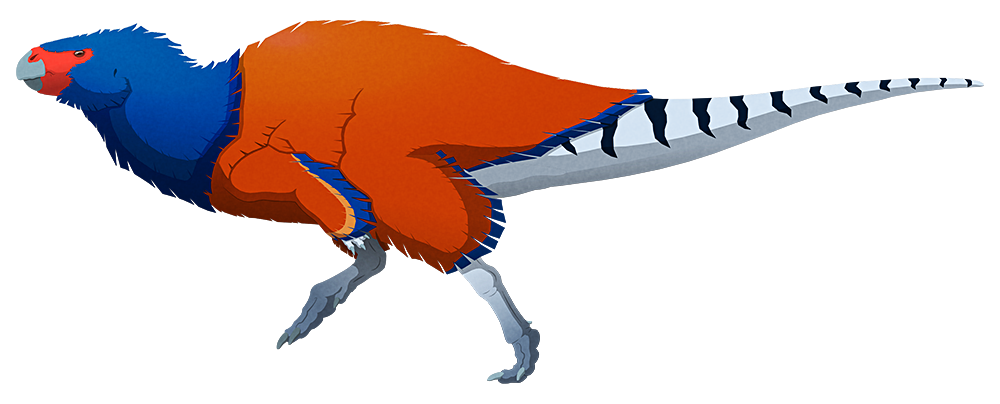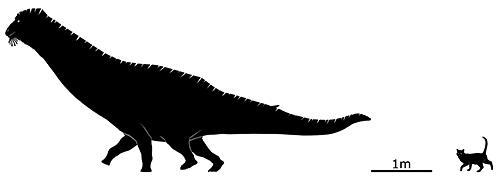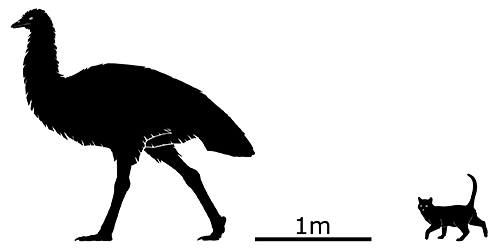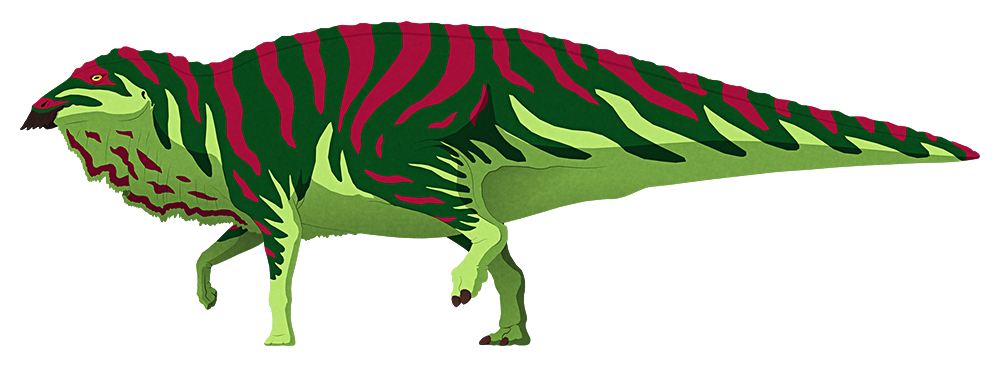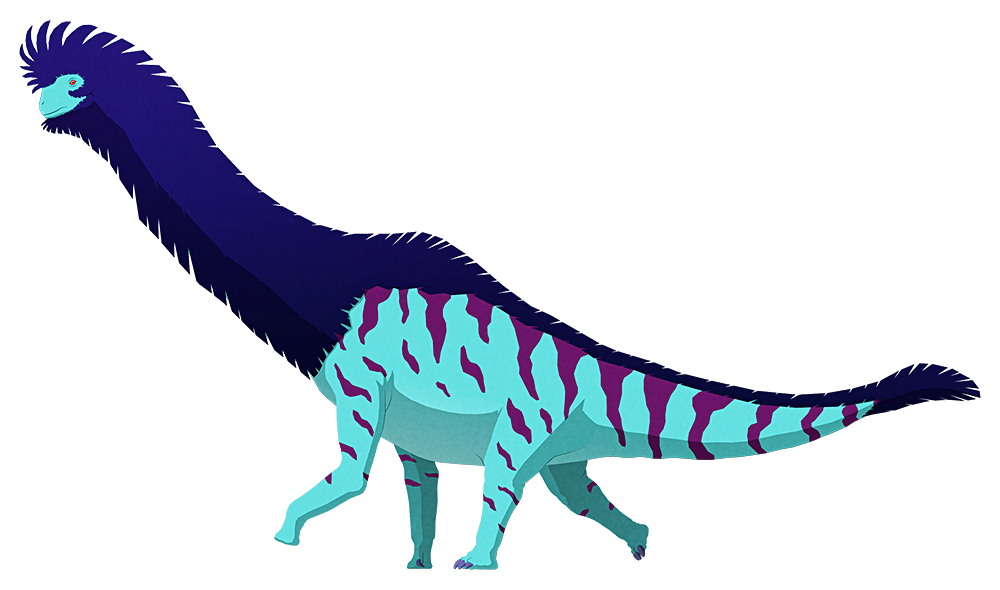There are no big theropod dinosaurs known from the end-Cretaceous Hațeg Island ecosystem, but that doesn’t mean there weren’t any large carnivores at all.
The apex predator niche here instead seems to have been occupied by Hatzegopteryx, an enormous azhdarchid pterosaur. Standing up to 4.5m tall (14’9″) when on the ground, and with an estimated wingspan rivaling Quetzalcoatlus (~11m / 36′), it was one of the largest animals to ever fly – although like other azhdarchids it probably actually spent most of its time stalking around quadrupedally on the ground eating whatever it could fit into its mouth.
Its neck was shorter and chunkier than most other azhdarchids, and its skull was wider and more massively built. The walls of its hollow bones were also unusually thick and reinforced for a pterosaur, so much so that they were initially mistaken for those of a theropod instead.
Fossils of Hatzegopteryx are very fragmentary, however, so its full appearance and the specifics of its diet are still uncertain. But it would have probably been able to tackle much larger prey than other azhdarchids, possibly capable of using its sturdy beak to bludgeon or stab anything too big to pick up and swallow whole in a similar manner to modern marabou storks.
